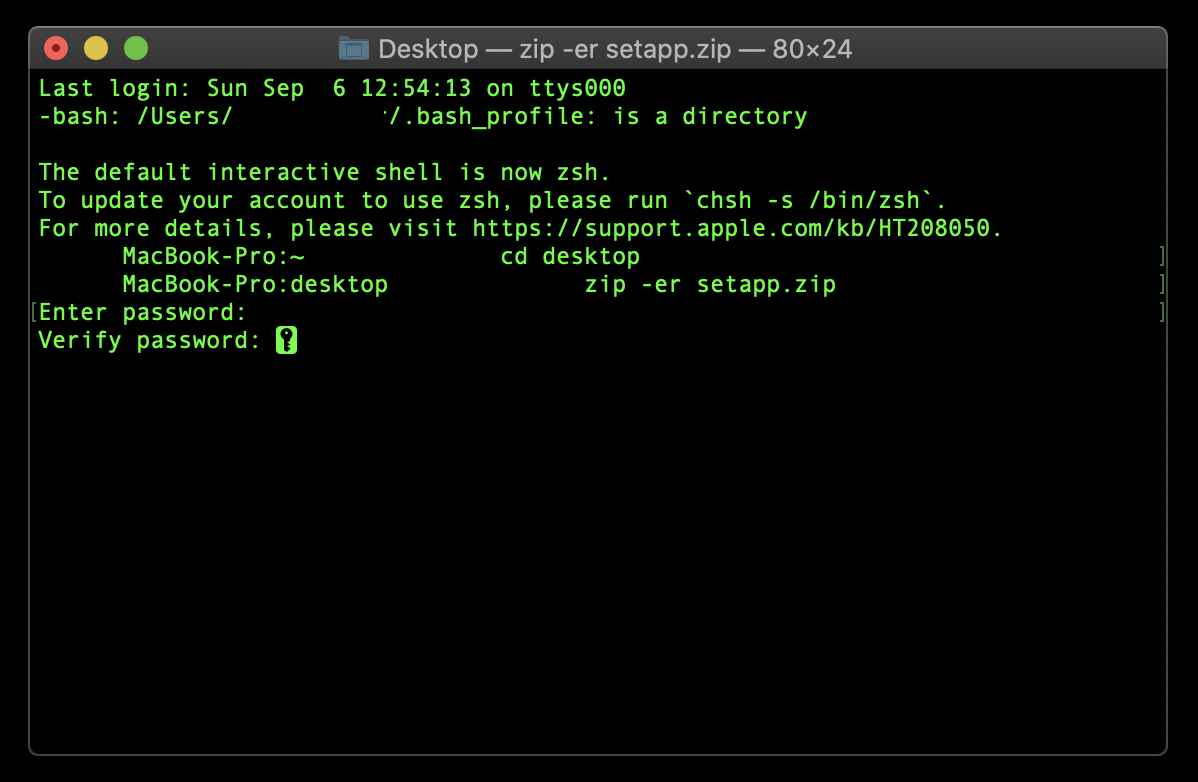

- HOW TO ZIP A FILE ON MAC TERMINAL HOW TO
- HOW TO ZIP A FILE ON MAC TERMINAL MAC OS X
- HOW TO ZIP A FILE ON MAC TERMINAL MAC OS
- HOW TO ZIP A FILE ON MAC TERMINAL INSTALL
With regards to delete file or delete folder command line functionality, Terminal lets you: Why delete file command line feature is important Since macOS is a Unix-based system, nearly all system tasks you do every day with the help of its graphic interface can also be performed via the command line tool called Terminal. Let’s see how and why you should learn it too. Experts, however, often find themselves defaulting to the command line delete directory feature. Others employ the ⌘ + Delete shortcut, which works across the system (even within dialog windows). But how do you do that? Most people right-click on what they need gone and choose Move to Trash from the menu or use the File option in the menu bar. If you never get rid of anything, soon enough all those extra gigabytes will take a toll on your Mac’s processing power, RAM, and hard drive, not to mention your digital life will resemble a dreadful episode of Hoarders. One of the most basic computer functions - deleting files and folders - is also one of the most essential. But to help you do it all by yourself, we’ve gathered our best ideas and solutions below.įeatures described in this article refer to the MacPaw site version of CleanMyMac X. Save my name, email, and website in this browser for the next time I comment.So here's a tip for you: Download CleanMyMac to quickly solve some of the issues mentioned in this article. Your email address will not be published. But if all you’re searching to do is extract a file there is not much more to do than a simple unzip command.

You can aslo add paths and other info if you want to. However, unzipping from the command line is quite easy, using the easy ‘unzip’ command:

Enter ‘zip’ as usual then drop in the file(s) to compress in the Terminal window. Then you can also create the Zip archives from the command line simply by using the terminal command ‘zip’ with the following syntax:Īnother easy method to create an archive from the command line is to use the Terminal’s drag & drop support. If you don’t want to use the standard Finder and file system approach. Then the incoming extracted folder would be named “ZippedSample” in that same ~/Downloads/ directory. Or else control-tap with keyboard, or two-finger tap on a trackpad from the Mac.Įxtracting zip files is very easier, you just double-tap on the archive and it will automatically expand with Archive Utility in the same folder the archive is saved in.įor instance, when you extract an archive named “ZippedSample.zip” in the ~/Downloads/ directory.
HOW TO ZIP A FILE ON MAC TERMINAL MAC OS
However, it works in all variants of Mac OS X, and you can then access the compress item option from a right-tap with a mouse. If you zipped more than one file, then the archive will be named “Archive.zip”, and if several archives are created, they will be named “Archive 2.zip” and so on so forth. When each file is being zipped, the zip archive maintains the standard file name but adds its.
HOW TO ZIP A FILE ON MAC TERMINAL INSTALL
lots of files without messing with or install overly difficult software.
HOW TO ZIP A FILE ON MAC TERMINAL MAC OS X
Let’s take a look: Create Zip File On Mac OS X
HOW TO ZIP A FILE ON MAC TERMINAL HOW TO
If you don’t know how to create zips on the Mac, you can do it quickly. You don’t want to install extra software or add-ons to instantly create zips and compress either each file, a group of files, or a whole folder. But with the help of compression tools built directly into Mac OS X. Well, making a zip archive on a Macis very simple or easy. Ever wondered how to create a zip file or folder in Mac OS X? If you are looking for it then you are in the right place.


 0 kommentar(er)
0 kommentar(er)
